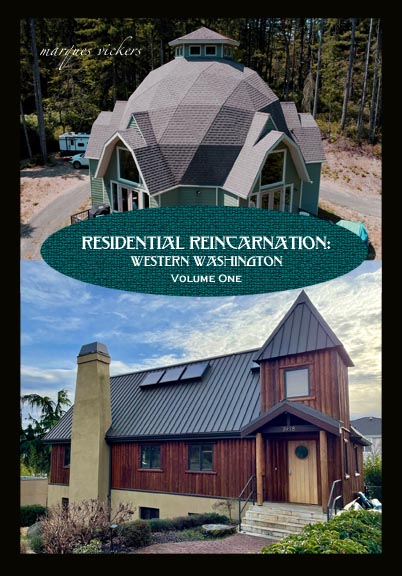
Adobe PDF File eBook Ordered From This Website Will Be Delivered Within 24-48 Hours from your confirmed order as we manually process each order. Thank you for your understanding.
AVAILABLE FOR SALE


Residential Reincarnation: Western Washington
Volume One
Houses become organic evolutions that shift from one owner’s vision to the subsequent. The Residential Reincarnation series examines the alteration of structures that have become distinctively tailored and repurposed into fresh identities. Two Western Washington properties with prior lineages evolved into contemporary residential showpieces. This edition intimately profiles each stage of their transformation.
Former St. John’s Episcopal Church: Gig Harbor, Washington
The metamorphosis of the earlier ecclesiastical edifice mirrors a cygnet maturing into a swan. Each successive stage of enhancement added a distinctive feather towards the overall plumage. The transformation into a suburban gemstone evolved over a period of 75+ years involving six successive owners dating from the original sale of the church property that relocated due to spacing constraints.
The original church was designed by Tacoma based architect Gaston C. Lance who during a prolific career created the Weaver Motion Picture Studio facility and Chinese Pavilion for the 1909 World’s Fair. His firm would later design numerous Puget Sound churches, commercial and residential buildings.
For the St. John’s Episcopal Church project, Lance incorporated vertical log exterior framing, an unconventional style promoted by local sawmill proprietor Charles Austin. Lance installed a spacious framed window inside the church sanctuary projecting a panoramic view of Gig Harbor.
In 1960, Tacoma architect William Reed would initiate the secularization conversion from a house of worship into a home where he resided with his family for a decade. The subsequent owner would live there for three decades.
Between 2008-2012, Reed’s rustic style appearance would become radically transformed and modernized by homebuilder Todd Delahunt. His distinctive aesthetic vision required lifting the original truss ceiling framing. It would be replaced with a custom fitted and cross-linked vertical and horizontal support beam.
Delahunt’s imagination and experience would transfigure the dated appearance into a progressive archetypical icon. This transition was accomplished by maximizing the exposure of the building’s available light, space and depth capabilities. He radically re-oriented the layout schematics employing elite materials accompanied by contemporary fixtures and accessories. The successful outcome displayed a unified marriage of continuity and exemplary design.
Former Unfinished Dome Storage Structure: Port Orchard, Washington
Domes have historically been associated with the finite line separating the heavens from earth. Celebrated and associated with numerous religions and cultures, a dome often embodies a sense of symbolic shelter.
Jim Perkins envisioned completing a dome living space as a challenge to his construction skills upon acquiring a 5-acre Port Orchard forested property during the 1970s. He fashioned a protective shell of plywood and sealed a cupula for exterior protection. He left shaping for dormers, but did not install the windows. He would never reside in his structure.
Preferring to retire and relocate to Arizona, he sold his unfinished project to Bryn Schueler during July 2005. Over the next decade, Schueler with the assistance of friends would meticulous provide the necessary exterior and interior polish to compete a stunning and cohesive finish. One of the most aesthetic features is a precision cut and fitted cloisonné patterned wood ceiling. The completed version would add significant living space accentuated by a three-tiered interior, exterior balcony, fireplace, and spiral staircase.









